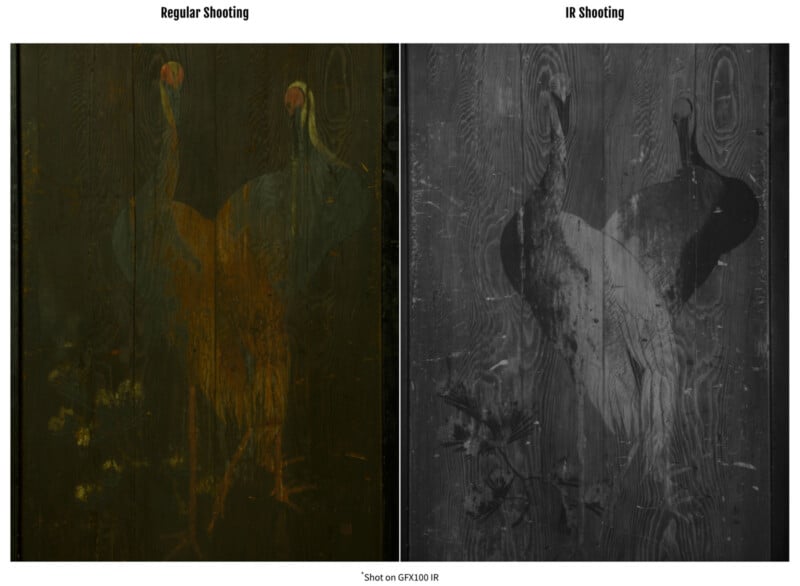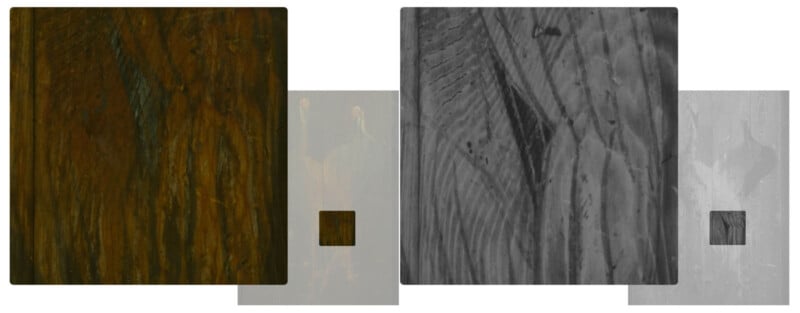![]()
Like it did back in late 2020 with the original GFX100, Fujifilm has released a specialized infrared version of its current flagship medium-format camera, the GFX100II IR. The company also debuted the X-H2 IR, a 40-megapixel infrared APS-C X Series model.
Spotted by Fuji Rumors, the two new cameras are purpose-built imaging tools designed for forensics, scientific research, and cultural preservation projects, like digitizing and archiving artworks.
![]()
A typical Fujifilm X or GFX Series camera includes an infrared-cut, or IR-cut, filter in front of its image sensor. This ensures that images look “right,” and are sharp with accurate color rendering. Thanks to the IR-cut filter, a standard Fujifilm digital camera sensor is exposed to visible light, ranging in wavelength from approximately 380 to 780 nanometers. Infrared light, which has wavelengths beyond 780 nanometers, is prevented from reaching the image sensor by the IR-cut filter.
![]()
The GFX100II IR and X-H2 IR models ditch this sensor, enabling them to capture infrared wavelengths of light. This is useful for very specific applications.
As Fujifilm explained when it announced the GFX100 IR in 2020, “Images made of a subject within the infrared spectrum can reveal details that a regular (non-IR) digital camera or the naked eye cannot see. For example, in the field of forensics, this can be an important tool in helping to identify counterfeit documents. For individuals working in cultural preservation, GFX100 IR can be used to analyze pigments and in works of art and historical artifacts, even if they have degraded over time.”


When used alongside specific infrared filters, such as those that let only certain wavelengths of infrared light through to the image sensor, photographers can reveal different details in their subject. Likewise, photographers can put a standard IR-cut filter on their lens to make the IR camera behave like a typical camera.
As Fujifilm demonstrated earlier this year with the original GFX100 IR, its infrared cameras can also be used for specialized aerial mapping, since different wavelengths of light can reveal new details about the Earth’s surface.
The GFX100II IR and X-H2 IR both support Pixel-Shift Multi-Shot shooting as well, enabling the cameras to capture 400 and 160-megapixel images, respectively, which can be highly beneficial for cultural preservation projects in particular.
Unlike Fujifilm’s X-T4 Extended Spectrum and X-T1 IR cameras, but like the GFX100 IR, the new Fujifilm GFX100 II IR and X-H2 IR cameras will not be available to the general public. Interested purchasers must sign an infrared user agreement and purchase the camera directly through Fujifilm for an undisclosed price.
Photographers who don’t want to jump through hoops can, of course, send their cameras to a specialized infrared conversion company like Kolari Vision to have them turned into infrared cameras. Kolari sells full-spectrum X-H2 cameras for $2,730 and will convert a GFX100 II for $1,149. Kolari’s converted cameras are also UV-spectrum compatible, expanding the spectral sensitivity to wavelengths shorter than visible light.
Image credits: Fujifilm
Source link

/AI%20(artificial%20intelligence)/3D%20Graphics%20Concept%20Big%20Data%20Center%20by%20Gorodenkoff%20via%20Shutterstock.jpg)